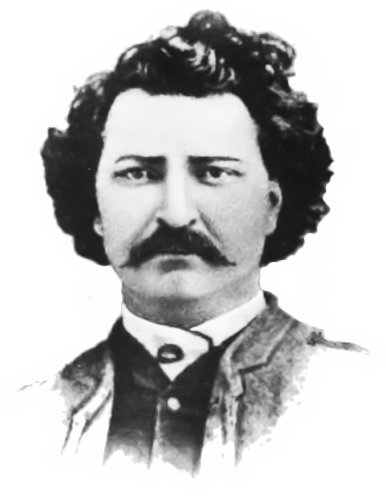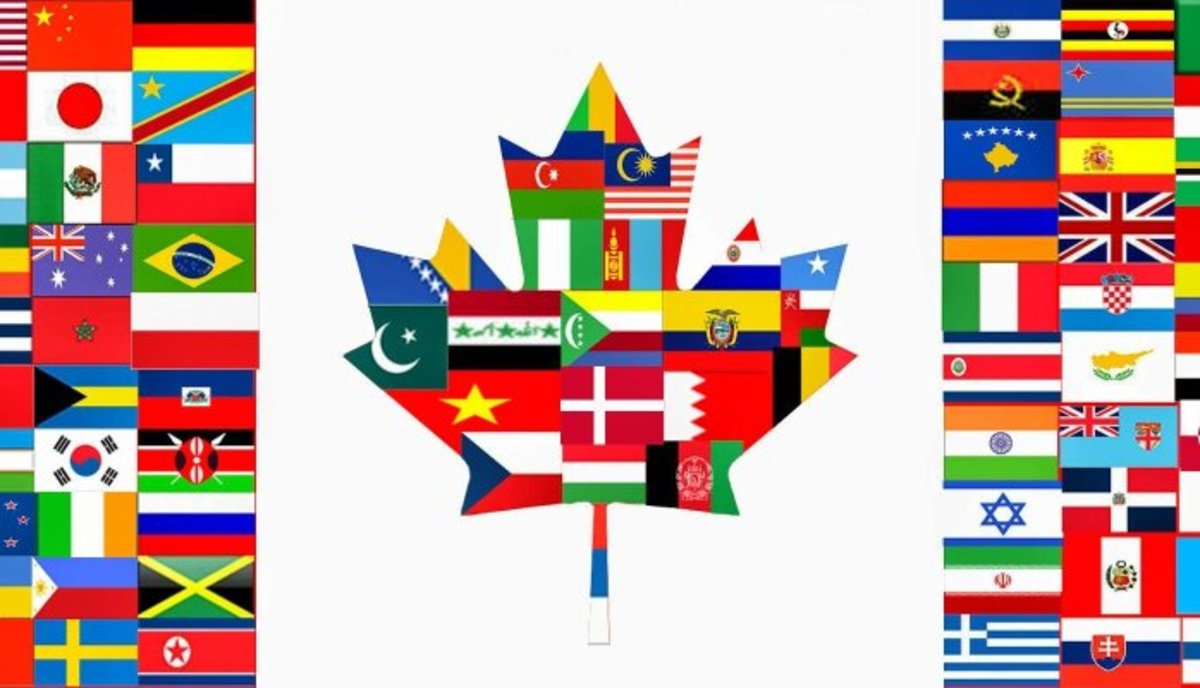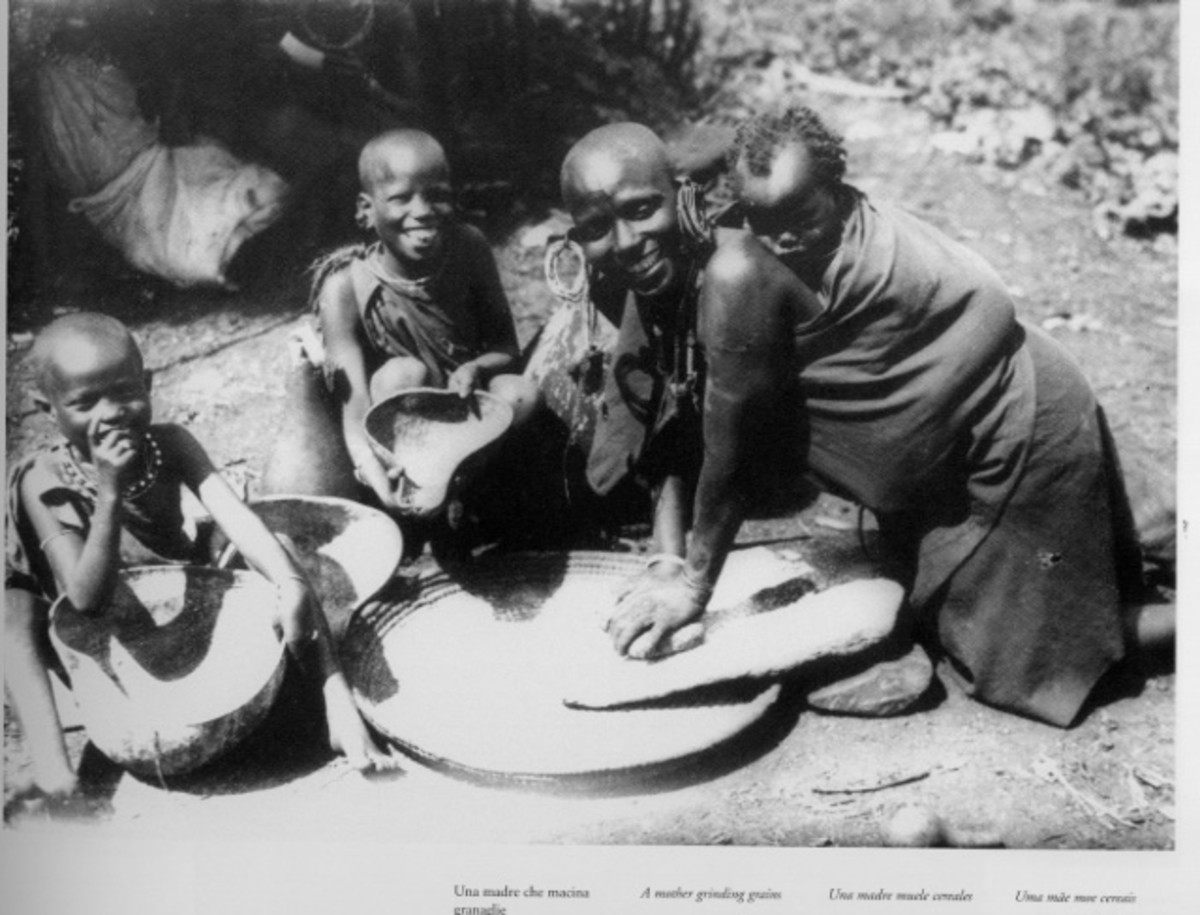Mixed Cultures from Different Worlds
Louis Riel as he was as an important Metis leader

The Birth of New Peoples
Right from the outset, there were relations between Europeans and the First Nations that led to a host of what might be called, new nations or mixed race peoples born of First Nation brides and European pioneers, explorers, settlers, tappers, traders and miners. These relations were defined by several conditions, such as necessity, for peaceful co-existence, due to rape, the result of sex slavery and the loneliness of the wilderness that initially was explored by men only. Having the need for a companion, many took First Nations brides and partners, often wedded in First Nations ceremonies. Some were arranged, some were born of love and many were forced. The end result in almost all of these cases was children of mixed ancestry. Today we find these people all over the western hemisphere and they were born mainly from French, English, Spanish and Portuguese fathers and First Nations mothers. In other cases, black escaped slaves integrated with First Nations and themselves stung by forced labor, adopted the escaped black slaves as their own and integrated them thoroughly into First Nations culture. These also had children. The result was a host of mixed nation peoples. Some have grown to considerable size, while others remain small in number, but they live among us today. Some live in reservations of their own, while others have been assimilated into contemporary civilizations that exist in the western hemisphere.
In Canada, the term for mixed ancestry people between First Nation and European, mainly French, is the French word Métis, but this can include the Mi'kmaq mixed ancestry of the Maritimes and northeast US which includes the Algonquian, the Iroquois confederacy, and the Huron, Saulteaux, Menominee, Maliseet and other First Nations. The majority of Métis were born of First Nations brides and European French, English and Scottish husbands often from the HBC that traded and lived with mainly the Cree and Ojibway nations, which was extensive in size. As the Cree and Ojibway were part of the vast plains First Nations, contact by the Spanish in the south caused a variant title of Metis to be used. 'Mestizo' or 'Mestiço' was used to describe these descendants. From virtually the moment of contact on the shores of Hudson Bay and James Bay, there was peaceful relations as this proved to be mutually beneficial. To the north where the Inuit lived, there were mixed ancestry children born who were to become known as Kablunângajuit. War was to come later from conflict between the French and English and later from the US in the south. Relations to the east and south were not as peaceful, so as a consequence, there was far less mixing. Much further south in Spanish dominated lands, the terms Mestizo, or Mestiço and even Métis were used in Latin America and the Philippines for European and First Nations mixed ancestry. Historically, the Métis spoke French or a mix of French and First Nation tongues called Michif. Alternately, English and Scottish mixed ancestry in Rupert's Land spoke a mix of English and Gaelic. Today, a mix of languages is spoken by the Métis with English predominating, followed closely by French and then First Nations languages. In Latin America, the languages are Spanish, mixed Spanish and First Nations or First Nations derivatives.
Like the First Nations, the Métis were to end up in conflict with the Europeans and also various First Nations. They were to be driven ever westward due to European expansion during the 1870s and thereafter. They were also to find themselves in a no-mans-land between the First Nations and the Europeans, subject to prejudice and exclusion from both and in many cases in a backlash, responded in kind. The differences that evolved and the fact that Métis were also included under various legislation and laws of the Canadian, US, central and south American governments ended up causing rebellion and revolutionary activity of varying success. Among these people are notable persons such as Louis Riel and Mexican revolutionaries.
Louis Riel is the quintessential Métis leader who was the founder of the province of Manitoba, was the central figure in the Northwest Rebellion at Red River Settlement. He was born on Oct. 22nd, 1844. He was central in a rebellion in November, 1869 and a second rebellion in Regina on Nov. 16th, 1885. He was educated at St. Boniface where he studied for the priesthood at the Collège de Montréal. In 1865 he studied law with Rodolphe Laflamme, and he is believed to travelled to and worked briefly in Chicago, Ill. and St Paul, Minn, returning to St Boniface in 1868.
During 1869, the Canadian federal government, anticipating the transfer of Red River and the northwest from the Hudson Bay Company (HBC) to Canadian jurisdiction, appointed William McDougall as lieutenant-governor of the new territory. Survey crews were subsequently sent to Red River. The Métis who lived there were fearful of the implications of the transfer. They, with good cause, were wary of the aggressive Anglo-Protestant immigrants from Ontario, and were still suffering economically from the grasshopper plague of 1867-68. The Métis thus organized a "National Committee" of which Riel was appointed as secretary. Riel's educational background and his father's history marked him as the obvious leader of the committee. The committee managed to halt the surveys and prevented McDougall from entering Red River. On Nov 2nd, 1869, Fort Garry was seized and the HBC officials offered no resistance. The committee invited both English and French speaking people of Red River to send delegates to Fort Garry. While everyone was discussing a "List of Rights" prepared by Louis Riel, a group of Canadians led by John Christian Schultz and John Stoughton Dennis, organized an armed resistance in answer to the Métis. Meanwhile, the federal government postponed the transfer, planned for December 1st. Dennis and McDougall returned to Canada from the Red River region. When Schultz and his men surrendered to Riel, he imprisoned them in Fort Garry and issued a proclamation called "Declaration of the People of Rupert's Land and the Northwest." On Dec 23rd, Riel became head of the "provisional government" of Red River.
The Canadian government then sent “special commissioners of goodwill” to Red River. These were Abbé J.B. Thibault, Colonel Charles de Salaberry and Donald A. Smith, chief representative of the HBC in Canada. Smith persuaded Louis Riel to summon a general meeting, at which it was decided to hold a convention of 40 representative speakers, equally divided between English and French of the Red River settlement. The first meeting was on Jan. 26Th, 1870. The delegates then debated a new "List of Rights" and endorsed Louis Riel's provisional government. The Canadian prisoners taken in December 1869 were released and plans were made to send 3 delegates to Ottawa to negotiate the entry of Red River into the Canadian Confederation.
In the meantime, a force of some of the Canadians who had escaped earlier from Fort Garry, mustered by Schultz and the surveyor Thomas Scott and led by Canadian militia officer Charles Boulton, gathered at Portage la Prairie. They hoped to enlist support from the Scottish parishes of Red River. The sudden appearance of this armed force alarmed the Métis of Red River who promptly rounded them up and imprisoned them again in Fort Garry. The Métis then convened a court-martial under the authority of the provisional government where Boulton was condemned to death. Smith intervened on behalf of Scott, however, and the sentence was suspended. But, at a following court martial presided over by Riel's associate, Ambroise Lépine, Scott was sentenced to death. This time Smith's appeals were rejected and he was then executed by firing squad on March 4th, 1870.
Bishop A.A. Taché of St Boniface who was summoned from the 1870 Ecumenical Council in Rome, reached Red River four days after Scott's death. He brought a copy of the federal proclamation of amnesty, which he believed included any actions up to that date. Taché persuaded Riel's council to free all the prisoners and send delegates to Ottawa. Despite opposition from the Orange Lodges of Ontario, of which Thomas Scott had been a member. Louis Riel's delegates obtained an agreement, embodied in the Manitoba Act, which was passed on May 12th, 1870. The the transfer was set for July 15th, 1870. In addition, the Canadian federal government agreed to a land grant of 1,400,000 acres for the Métis and to bilingual services for the new province. Other than verbal assurances, there was no specific mention of the amnesty.
During the summer of 1870, in reassurance to Ontario and support the administration of the newly appointed lieutenant-governor A.G. Archibald, the Canadian federal government sent a military force to Red River under Colonel Garnet Wolseley. Though the Red River expedition was supposed to be a mission of peace, Louis Riel had reason to fear its arrival. He fled to the US a a result. He later returned quietly to his home at St, Vital. When the new province of Manitoba was threatened with a Fenian raid from the US in the autumn of 1871, Riel offered a force of Métis cavalry to Archibald.
In Ontario, Louis Riel was widely denounced as Thomas Scott's murderer and a bounty of $5,000 was placed on his head and offered for his arrest. In Québec, however, he was regarded as a hero, a defender of the Roman Catholic faith and of the French culture in Manitoba. Anxious to avoid a political confrontation within the 2 principal provinces of Canada, Sir John A. MacDonald tried to persuade Louis Riel to remain in voluntary exile in the US. MacDonald even provided Riel with funds as a kind of bribe. But, encouraged by his friends and supporters, Riel entered into Canadian federal politics. He proved successful in a by-election in 1873 and in the general election of 1874. Louis Riel then went to Ottawa and signed the register, but he was expelled from the House on a motion introduced by the Ontario Orange leader Mackenzie Bowell. Although Riel was re-elected, he did not attempt to take his seat in the House again. Meanwhile Ambroise Lépine, associate of Riel, was arrested, tried and condemned to death for the murder of Thomas Scott. After this, his sentence was commuted to two years' imprisonment and loss of his political rights. In February of 1875 the Canadian federal government adopted a motion granting amnesty to Riel and Lépine, conditioned on five years' banishment from "Her Majesty's (Queen Victoria) dominions."
Shortly after this Riel suffered a nervous breakdown and was then admitted to hospital at Longue Pointe, Montréal as "Louis R. David." He was later transferred to the mental asylum at Beauport, Qué, as "Louis La Rochelle." Always introspective and strongly religious, Riel became obsessed with the idea that his was a religious mission, to establish a new north American Catholicism with Bishop Bourget of Montréal as the Pope of the New World. He was released from care in January of 1878 and spent some time in Keeseville, NY. From there he set out for the Upper Missouri region of the Montana territory where he engaged in trade, joined the Republican Party, became an American citizen, and married a Métis woman, Marguerite Monet, dit Bellehumeur. In 1883 he became a schoolteacher at St Peter's mission on the Sun River. In June 1884 was asked by a group of Canadian Métis to help them obtain their legal rights in the Saskatchewan valley.
Early in July, 1884, Riel and his family reached Batouche, the main center of Métis settlement in Saskatchewan. He conducted peaceful agitation, speaking throughout the district and preparing a petition to be sent to Ottawa. Riel was sent to Ottawa in Dec. 1884 and his petition was acknowledged by the federal government, which promised to appoint a commission to investigate and report on western problems.
However, early in 1885, Riel encountered opposition in Saskatchewan due to his unorthodox religious views. Old memories of Thomas Scott's execution, and his reiteration of his personal claims against the federal government, which he estimated to be $35,000, suggested self-interest as the motive behind his political activity. His exasperation increased as he began to contemplate direct action. But this was not the same as 1870 when Wolseley had taken several months to lead a military force to Fort Garry, allowing time to prepare. By 1885 the North-West Mounted Police (NWMP and predecessor to the RCMP) had been established and a railway to the West was almost complete allowing for much faster response times. However, convinced that God was directing him, Riel saw himself as the Prophet of the New World. On March 19th, 1885 Riel seized the parish church at Batoche, armed his men, formed a provisional government and demanded the surrender of Fort Carlton. The ensuing fighting lasted almost two months before Riel surrendered and was taken into custody by Canadian government forces.
On July 6th, 1885, a formal charge of treason was laid against him. July 20th, 1885 saw the beginning of his trial at Regina, Saskatchewan. His counsel proposed to defend him on the grounds of insanity, but Riel rejected that defense. In the face of damning statements by his cousin, Charles Nolin, who had opposed him in 1870 and deserted him in 1885, the jury found Riel guilty of treason. However, the jury recommended clemency. The verdict was then appealed to the Court of Queen's Bench of Manitoba and to the Judicial Committee of the Privy Council. Both appeals were rejected, but public pressure, particularly from Québec, delayed execution pending an examination of Riel's mental state. The three examining physicians found Riel excitable, but only one of the three considered him insane. The official version of the report did not reveal any difference of opinion and the Canadian Federal Cabinet decided in favour of hanging. Riel was executed at Regina on Nov. 16Th, 1885. His body was subsequently sent to St Boniface and interred in the cemetery in front of the cathedral.
The Métis, particularly in Canada, that was moving virtually in lockstep with events in the US, were pushed along with the rest of the First Nations, ever westward. Many wound up in reservations, but separate from those of the First Nations. In the expansionism of the 1870s, Many First Nations and Métis suffered similar trials. The Civil War in the US complicated matters as the British operated out of Canada as well as the Gulf region in a bid to crush the US in payment of the 1776 revolution. Thus there was a rush to seal the entire Canadian border against US expansion into the north. The Canadian government rushed to complete the Canadian version of the trans continental railway so that the territories could be better defended and British Imperialism could project its power more effectively. Thus, First Nations and Métis who had helped in the early days of the development of Canada were suddenly in the way as pioneers, settlers and cattle ranchers expanded ever westward along with the railway. The Bison were slaughtered in Canada along with the US resulting in a parallel engineered famine on the great plains. First Nations, susceptible to smallpox, were given deliberately infected blankets with devastating results. Métis, who had partial immunity granted from their European side, did not suffer as greatly. However, the engineered famine had the same effect on them as the First Nations.
Politically and philosophically, Riel's execution has had a lasting effect on Canadian history, particularly among the Métis. To the West, the immediate result was to cause depression for many the Métis. In central Canada, French Canadian nationalism was strengthened and Honoré Mercier came to power in Québec during 1886. Over the longer term, Québec voters moved from their traditional Conservative Party support to the Liberal Party led by Wilfrid Laurier. Today after more than a century, Riel and his fate excite political debate, particularly in Québec and Manitoba. Riel's execution has remained a contentious issue even today and demands have been made for a retroactive pardon. In parts of Canada, November the 16th is now celebrated as Louis Riel day.
To the south of the US another rebellion was at hand. From 1521 through to 1650 the First Nations population was heavily reduced due to of fighting, diseases brought by the Spaniards against which they had no immunity and the destructive effects of colonization on their way of life. The Spanish population grew during the same time. By 1810, there were an estimated six million inhabitants in New Spain, of which 60,000 were Spanish born in Spain, 940,000 were Spanish born in the territories, 3.5 million were First Nations Mexicans and 1.5 million were Mestizos of mixed Spanish and First Nations blood, similar to the Métis to the north in Canada and the US.
Although silver mining was the most sought after source of wealth, something like gold in the US, most of the inhabitants made their living from agriculture and raising livestock. The Spanish farmed large properties called haciendas, while the First Nations population worked small plots or as serfs or share croppers on the lands owned by their Spanish land lords. The Spanish also were in control of commerce and the economy. The main products of Spanish Mexico were silver, sugar, cacao, hides and fine woods. The only manufacturing that really developed during this period was the textile industry.
By the early 19th century, the local middle classes had grown tired of sharing their wealth with Spain, and the idea of independence took root. In particular the Creoles, children born in “New Spain” of Spanish parents resented being considered inferior by those born in the European homeland. They saw an opportunity in the Spanish war against Napoleon's invasion of 1808 on the European mainland and seized the moment.
The main protagonists of the Independence of Mexico from Spain were the priests Miguel Hidalgo y Costilla and Jose Maria Morelos. On September 16th, 1810, Hidalgo freed the prisoners in the town of Dolores, locking up the Spanish authorities in their place and called the people of Mexico to rebel by ringing the church bells. Hidalgo started out with only 600 men, but soon had 100,000 followers and over ran the towns of central Mexico. Hidalgo was however, tricked, caught and condemned the following year, and was executed by firing squad on July 30th, 1811. Almost at the same time, Morelos, from the western city of Valladolid led successful campaigns in 1812 and 1813. This included the capture of Acapulco, the main port on the Pacific coast. However, he was captured and shot on Dec. 22nd, 1815. Despite the setbacks and false starts, the independence movement continued under the influence of Creole colonel Agustin de Iturbide. On September 28th, 1821, the first independent Mexican government was named with Iturbide at the head.
Mexico's independence was followed by 30 years of tremendous political turmoil. This included the Mexican-US war of 1846 to 1848 in which Mexico lost Texas, California and New Mexico to the victors to the North. The resistance of the Californian First Nations played a pivotal role in this, especially when they expelled the Spanish, giving unwitting support to the US that would later crush them in turn. In Mexico after this came a period of reform, led by the educated of the country. The liberal Benito Juarez, promoted reform laws that were incorporated into the Constitution of 1857. He would subsequently be elected president in 1861. As a provisional president, he also reduced the powers of the Roman Catholic Church, and confiscated their property. In Europe during 1864, Austrian Archduke Maximilian was made Emperor with the backing of Napoleon III. Maximilian ruled Mexico in absentia until 1867, when he was defeated and shot after Napoleon pulled out his troops to fight a war with Prussia. The return to government of Juarez after this is also known as the Restoration of the Republic.
The Juarez years were then followed by the dictatorship of Porfirio Diaz, a military leader who was president from 1876 to 1880 and again in 1884 through to 1911. Mexico underwent a period of unprecedented economic growth development under Diaz, but excluded the First Nations, with the construction of railroads, ports and telecommunications. But Diaz's repressive militarist government and the increasing gap between rich and poor, coupled with his courting of foreign investors and large landowners, led to discontent and uprising after he won his sixth consecutive election in 1910,.
The 1910-1917 Mexican Revolution was started by Francisco Madero, a democratically minded politician who was opposed to re-election. With military uprisings by Francisco Villa a.k.a. "Pancho" Villa in the north, and Emiliano Zapata in the south, Diaz was soon forced to resign and go into exile. In the mid 1990s and continuing to this day, the Zapatistas as they call themselves have re-emerged, particularly with the loss of corn to bio-fuel and rising prices of tortillas. In 1913, Madero became president, but his army chief Victoriano Huerta staged a coup and had him killed. Huerta stepped down in 1914, and Venustiano Carranza become president after him.
A new Mexican Constitution was established in 1917 which, among other things, restored communal land to the First Nations population and renewed the anti-clerical attitude of the Juarez years. The First Nations and mixed parentage peoples of all countries had an impact on how things are politically defined today and how they are continued to be shaped. In all cases, treaty violations continue, which defines the continuing relationship between the First Nations, the invading Europeans and those of mixed cultures in the twilight zone between the to clashing cultures.









